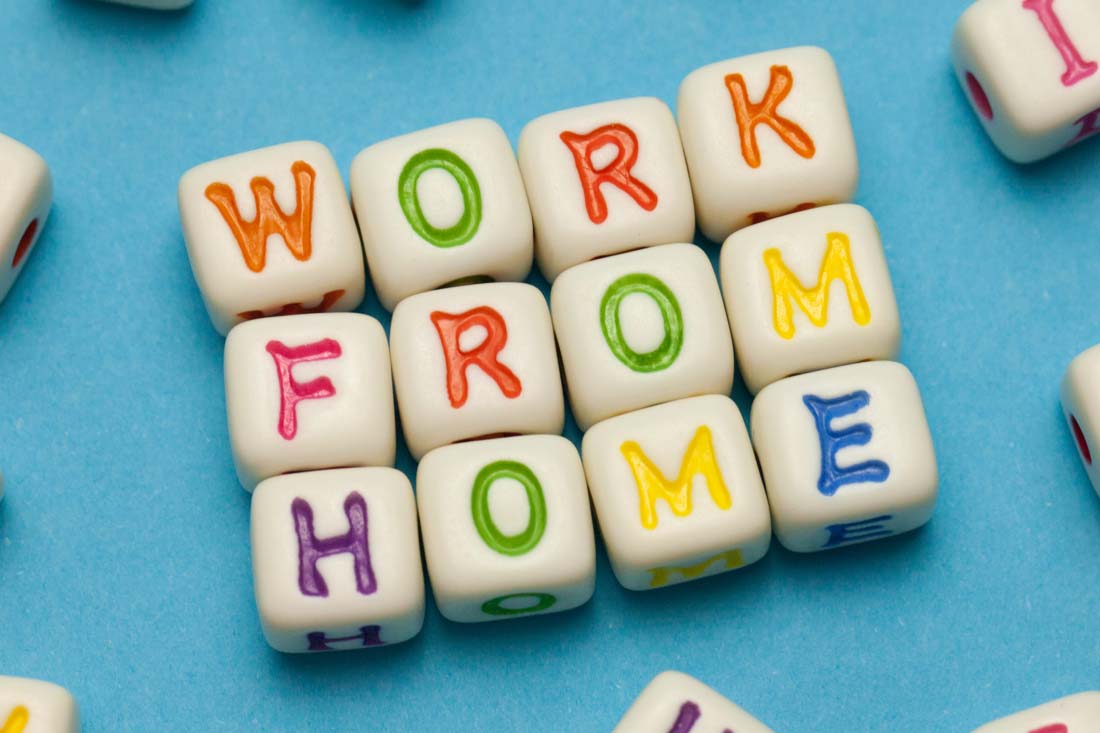The news is full of companies requiring employees to return to the office, often with mixed results. But plenty of research shows the ability to work from home improves employee well-being thanks to increased flexibility, better work-life balance and less stress. Remote setups also decrease turnover and reduce absenteeism. Still, employers who want to start or keep work-from-home (WFH) arrangements face questions about the productivity of remote work environments, cultivating company culture and maintaining data security.
Employee monitoring is an effective strategy to monitor employee productivity and ensure accountability. In this post, we’ll discuss the benefits of employee monitoring for work-from-home arrangements and how to implement a program in your organization.
What is employee monitoring?
Employee monitoring is a system for tracking and collecting data on employee activities to evaluate performance, ensure compliance with company policies and improve overall productivity. In remote work, employee monitoring takes a slightly different form, but the end goals are the same.
Employee monitoring enhances productivity and ensures adherence to company guidelines while fostering a culture of accountability and transparency. With effective monitoring strategies, employers gain valuable insights into their workforce’s strengths and areas for improvement, which leads to targeted training and development initiatives.
7 benefits of employee monitoring for work-from-home arrangements
Employee monitoring helps organizations with work-from-home arrangements in many ways.
1. Boost productivity levels
By tracking work activities, employers identify and remove productivity bottlenecks. Understanding how employees work and where they struggle also empowers leaders to create targeted support and resources. As a result, companies improve productivity by streamlining processes and helping people in areas where they need additional guidance.
2. Ensure accountability and transparency
Remote employee monitoring tools promote a culture of accountability and transparency. When employees know their actions and performance are monitored, they’re more likely to adhere to established deadlines, follow organizational policies and reduce idle time.
At the same time, organizations foster transparency by openly communicating their monitoring practices to increase trust. Organizations that clearly communicate expectations and openly track performance metrics create a sense of fairness and equality in the workplace, contributing to a positive work environment and stronger relationships.
3. Enhance employee engagement
Remote work can make employees feel isolated, especially when they don’t know how their work contributes to the overall success of your organization. Employee monitoring tools bridge this gap with real-time feedback for managers so they can provide better recognition for hard work and accomplishments.
For example, consider a manager who sees an employee complete an activity significantly ahead of schedule — they could acknowledge the employee for getting the job done faster than expected. Similarly, a manager who sees an employee logging extra hours could provide recognition for going above and beyond when needed. The enhanced visibility from employee monitoring allows managers to provide better recognition, boosting employee morale and engagement.
4. Bolster data security
Data security is a big issue for organizations today, and maintaining security across remote teams is difficult. Effective employee monitoring quickly reveals risky behaviors like unauthorized access or misuse of information. IT and security teams use employee monitoring to track who accesses sensitive information and when and how they access it.
Because employee monitoring gives security teams info about potential breaches in real time, they can better contain possible problems. From detecting spam or phishing attacks to monitoring file transfers and tracking database access, employee monitoring equips data security teams to act quickly before customer information or intellectual property is compromised.
5. Reduce compliance risks
Remote organizations need ways to ensure employees comply with company policies and regulations. As with data security, employee monitoring tools allow you to set alerts around irregular or suspicious activity to stop compliance violations before they occur. These solutions also make it easier to comply with reporting requirements.
Need to enforce policies for website access, social media use or using company computers for personal purposes? Employee monitoring helps with this too. Highly-regulated companies also use it to ensure the entire organization follows regulatory guidelines, such as limiting where government employees can work and which systems to avoid to protect sensitive information.
6. Improve the bottom line
By increasing employee performance and reducing inefficient processes, employee monitoring helps businesses do more with existing resources. Beyond getting more out of employees by helping them work more effectively, employee monitoring also helps improve the bottom line by identifying cost-saving opportunities. For example, a manager who notices employees aren’t using an expensive tool may decide to get rid of it and reduce expenses.
For companies with work-from-home arrangements, employee monitoring also reveals opportunities to reduce costs by downsizing office space. If you know employees are more productive when working from home, expanding your work-from-home arrangement allows you to move into a smaller, more affordable office.
7. Reduce turnover
When done right, employee monitoring reduces turnover. Improving employee engagement and morale through a better work environment means more employees want to stay longer. Because studies show replacing a lost team member costs up to two times that employee’s salary, retaining employees is a major priority for any competitive organization.
How to monitor employees working from home
The term “employee monitoring” sometimes strikes fear in employees who envision invasive practices like screen recording or keyboard stroke counting. But when leaders implement monitoring correctly, they alleviate privacy concerns and build employee trust. Here are five tips to gain visibility into employees working from home without hurting morale.
1. Implement employee monitoring software
The best way to start a remote employee monitoring program is to use employee monitoring software like ActivTrak. These platforms take the guesswork out of productivity monitoring by automating processes, providing privacy protection and revealing trends. Time tracking tools and project management software only provide so much information about how, when and where employees are productive, but employee monitoring software gives real-time insights on availability, productivity and compliance. Easily spot what’s positively and negatively affecting productivity so you can implement changes to help employees work more effectively. Additionally, the software helps prevent employee burnout by detecting warning signs that may otherwise go unnoticed, especially for less visible remote employees.
2. Establish regular syncs
Maintaining communication is essential when employees are spread across different locations. Outside of messaging channels for quick questions and project updates, it’s also important for managers to set up regular meetings to monitor how each person is doing. These meetings provide an opportunity for employees to share how things are going and for support. Beyond one-on-one meetings with individual employees, it’s also a good idea to set up team syncs to help everyone stay connected even when working apart.
3. Provide self-reporting resources
Successful organizations with work-from-home arrangements provide employees with ways to communicate how changes affect their productivity. Give employees outlets for voicing concerns or praising effective policies. Regular employee surveys are a great way for employees to report issues, often anonymously, so your team gets a full picture of how people feel about employee monitoring programs — and how it impacts their productivity. This gives stakeholders a more holistic understanding of any issues. It also gives employees one more way to engage with the organization in a meaningful way.
4. Review conversations on messaging channels
Remote work environments rely on communication platforms for company-wide discussions, and these public channels are a great source of information for employers. Keep an eye on how employees are discussing projects or company-related issues with their peers to get a better sense of the inner workings of your organization. Some programs will automate employee sentiment monitoring on public messaging channels, too.
5. Keep track of ongoing projects
Task management is another way to monitor employee productivity and provide leadership with an understanding of trends that need to be addressed. For example, if employees are frequently pushing deadlines within a department, it’s often a sign something needs to change — whether that means increasing headcount, providing better training or changing goals for the team to accommodate a lighter workload. Tracking projects also provides insight into how long it takes for employees to complete projects and shows where bottlenecks hinder progress.
Get a demo of ActivTrak’s award-winning employee monitoring software
Start seeing the benefits of employee monitoring today with ActivTrak’s comprehensive employee monitoring solution. More than 9,500 customers use it to:
- Calculate productivity from a day-to-day perspective and see long-term productivity trends.
- Improve employee well-being with actionable insights on how, when and where employees are most productive.
- Spot signs of burnout and address unbalanced workloads while ensuring security and compliance, no matter where employees work.
Get a free demo to explore how employee monitoring can improve your organization’s work-from-home arrangements today.





